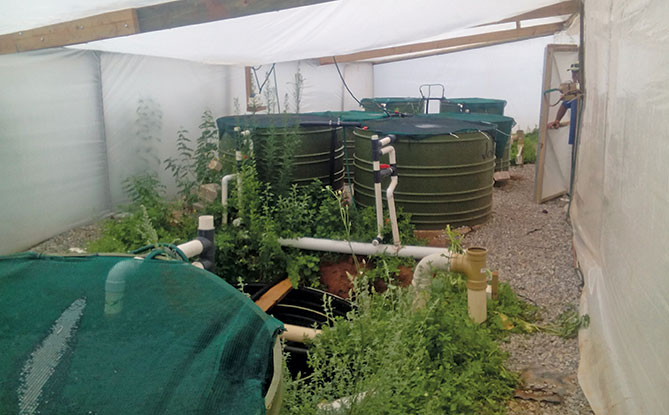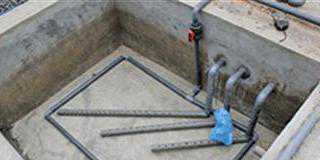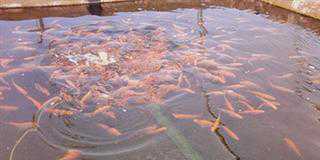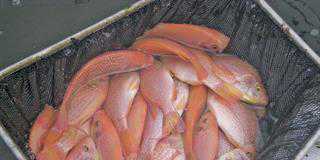
Photo: Nicholas James
The surge in interest in aquaponics is exponential. From a backyard hobby to commercial scale on peri-urban smallholdings, systems are emerging everywhere. But how successful are they?
Almost without exception, the main focus in aquaponics is the culture of plant crops.
Typically, these are vegetables such as lettuce, herbs and tomatoes, which are promoted as ‘organic’ produce of high value.
Aquaponics systems should produce two yields: plants and fresh fish. However, promoters virtually ignore the fish side, stating that they are used only to provide the nutrients for the plants.
This raises the question: is this real aquaponics or a version of hydroponics where nutrients are added to water to grow a crop?
Low oxygen level and water temperature
An examination of several facilities shows that this is indeed the case. The fish are confined to small plastic tubs of as little as 1 500ℓ, with high sides and limited surface area.
The water is circulated via a sump and through gravel beds and shallow tanks, cooling it. In winter, the water temperature may decline to as low as 12°C, which is almost lethal to tilapia.
Even at a temperature of 15°C to 18°C, tilapia consume small quantities of feed, and therefore grow poorly and contribute little to nutrient input.
The narrow tanks hold little oxygen, as this is absorbed at the surface, and provide no pH buffering capacity, which negatively affects the fish.
In an attempt to control this, potassium hydroxide is added to the water, creating further stress. Iron chelate, another chemical that does not occur under optimal growing conditions, is often introduced for plant growth.
Ammonia spikes can reach toxic levels, and the tanks accumulate sludge, which must be removed.
Aquaponics is missing something. In its zeal to promote itself, it has forgotten the goal of two, distinct yields from one system. It is far less risky to simply add nutrients to water to grow the plants than to house high densities of fish that must be fed and cared for.
Disasters such as pump failure can cause catastrophic loss.
Separate systems
Divorced systems, where high-performance fish strains are reared in wide, shallow, large-volume tanks housed in closed tunnels to retain heat, make the most sense.
These provide space and a high oxygen content, have a non-plastic construction to buffer the pH, and ensure a relatively high water temperature. These conditions reduce fish stress and increase yield.
A small volume of highly enriched waste water can then be diverted to the separate plant growing facility, ensuring that both systems are productive without the one negatively affecting the other.
A moderate-sized aquaponics facility can easily produce several tons of fish a year. If not, it is not genuine aquaponics but a form of hydroponics that uses expensive fish feed to grow plants at the expense of the fish.











